Jordan pilot murder: Islamic State deploys asymmetry of fear
- Published
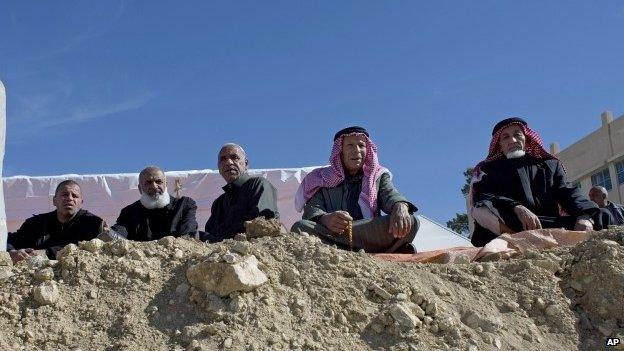
Despite the efforts of his family, it never appeared likely that Moaz al-Kasasbeh would be freed
By burning to death Jordanian pilot Moaz al-Kasasbeh, militant group Islamic State is leveraging its power to asymmetrically shock its enemies, argues Shiraz Maher, a Senior Fellow at the International Centre for the Study of Radicalisation at King's College London.
Even by the barbaric standards of Islamic State, the murder of the captured Jordanian pilot is particularly gruesome. The 26-year-old is paraded around the site of an alleged coalition airstrike, presumably to witness its effects first-hand.
He is then placed in a metal cage and set alight. The scenes are harrowing, the screams of anguish unimaginably horrific.
The slow, soft focus cinematography - coupled with primitive sadism for which IS's videos have come to be known - is always designed to shock.
It was quite deliberately aimed at capturing the world's attention. That it did. Within less than an hour of its release, US President Barack Obama issued a statement regarding the video's grisly contents.
King Abdullah of Jordan also shortened his visit to the White House and is returning home.

Lt Kasasbeh's murder has caused an outpouring of grief and anger in Jordan
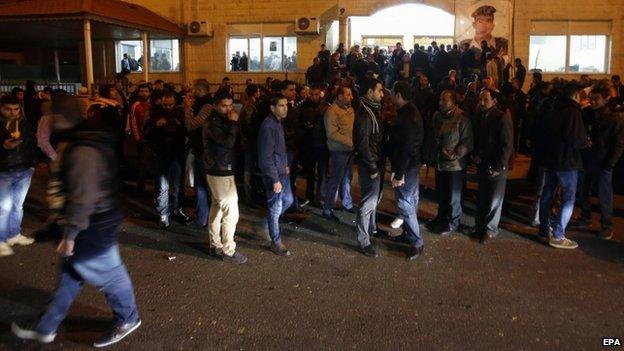
Supporters and family members of the murdered pilot have called for revenge
Questions abound over how or why IS could do this. To understand their mindset requires a brief examination of Islamic, or Sharia, law.
IS believes in a principle known as "qisas" which, in its broadest terms, is the law of equal retaliation. Put another way, it is the Islamic equivalent of "lex talionis", or the doctrine of an eye for an eye.
Within Islamic law qisas typically relates to cases of murder, manslaughter, or acts involving physical mutilation (such as the loss of limbs) and creates a framework for victims (or their families) to seek retributive justice.
As a pilot fighting with the Western coalition, Lt Kasasbeh would have been associated with dropping incendiary bombs - so burning could be seen by them as appropriate retaliation.
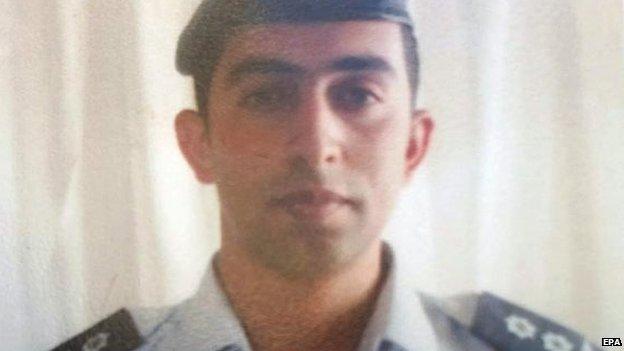
Lt Kasasbeh was captured after his plane came down in Syria in December
Even then, the issue of "punishing" with fire is deeply contested among Muslims. Many regard it as absolutely prohibited in all circumstances.
Indeed, the outrage from Muslims has been so strong that IS members have been forced to respond quickly with their own justifications for the act.
Regardless of the group's reasoning, this was the fate to which Lt Kasasbeh was condemned.
From the moment Islamic State captured him they had made it clear that he would be killed. Indeed, they even attempted to crowd-source his murder, at times asking users on social media to suggest precisely how he should be killed.
For this reason, there was never any realistic prospect of his release.
It is likely that all the recent talk of a possible prisoner swap was merely a ruse. Islamic State was only ever offering to trade Japanese hostage Kenji Goto in exchange for Sajida al-Rishawi, a failed al-Qaeda suicide bomber.
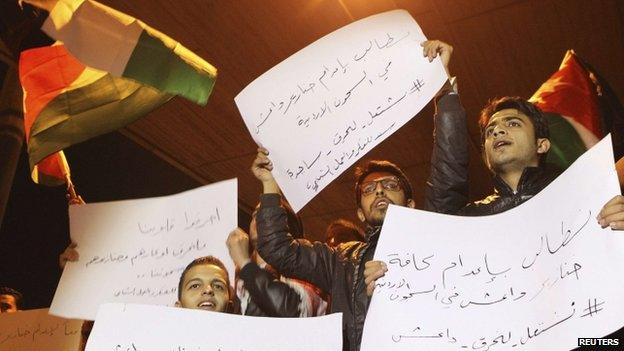
Many have protested against the pilot's killing, but others have asked why Jordan is participating in air strikes
That was not enough for Jordanian authorities, who insisted they also wanted Lt Kasasbeh released.
When officials in Amman asked for proof of life none was offered, prompting speculation that the murder may have actually taken place some weeks ago.
This would make sense. Shortly after his capture, the Jordanian and American armies launched two abortive attempts to rescue Lt Kasasbeh.
Fearing that another attempt might succeed, it is likely the group killed him weeks ago and then waited for an opportunity to release the video.
All armies want to develop an edge over their adversaries. Typically this involves investment in better hardware to project more power and menace.
IS knows this is not an area where it can compete.
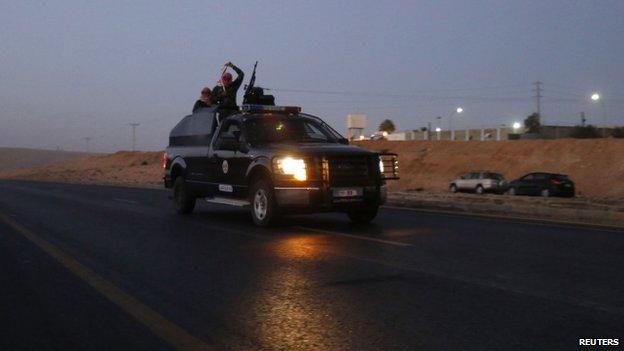
Unable to match its opponents on the military front, IS is instead using the weapon of fear
Instead, what it has is asymmetric power - the ability to shock and terrify with videos such as the one released on Tuesday. As always, we are the audience and the aim is clear - to shock and scare us.
In that regard the video has already been a success. Jordanians are outraged, but many are also asking why the country is participating in the coalition air raids against Islamic State.
The United Arab Emirates had already gone a step further after Lt Kasasbeh was captured in December. It withdrew from the coalition altogether, citing fears for the safety of its pilots.
That is perhaps the most potent weapon Islamic State possess today - the carefully curated asymmetry of fear.

Timeline: Jordanian pilot held hostage
24 December 2014: Jordanian Lt Moaz Youssef al-Kasasbeh captured by IS after his plane crashes
25 December 2014: Pilot's father urges IS to show mercy
20 January 2015: IS threatens to kill two Japanese hostages unless Japan pays $200m ransom within 72 hours
24 January: IS releases video of Japanese hostage Kenji Goto holding a picture apparently showing Haruna Yukawa's decapitated body
24 January: IS calls for release of Sajida al-Rishawi, an Iraqi militant sentenced to death in Jordan
28 January: Jordan offers to release Rishawi in exchange for Lt Kasasbeh
29 January: Deadline to kill Lt Kasasbeh and Mr Goto expires
31 January: Video released appearing to show Kenji Goto's body
3 February: Video released appearing to show Lt Kasasbeh burnt alive, with Jordanian media suggesting he was killed weeks earlier